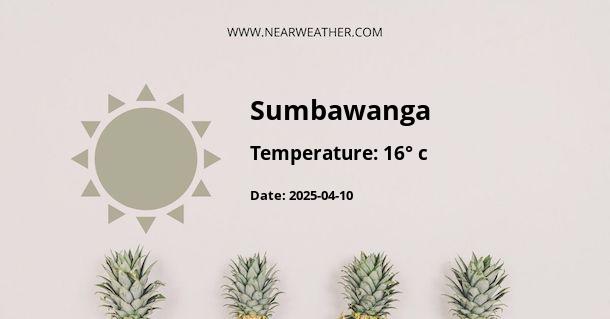Overview
Sumbawanga is an intriguing city located in the southwestern region of Tanzania. It is the region's administrative hub and the largest city of Rukwa Region. The city lies in a high altitude area, which significantly influences its weather and climate patterns.
Climate of Sumbawanga
The climate in Sumbawanga is classified as tropical, with a significant amount of rainfall throughout the year, even in the supposed dry season. The climate here is classified as Aw according to the Köppen-Geiger system. This translates to a tropical savanna climate with a pronounced dry season in the high-sun months.
Temperature
Across the year, the temperature typically varies between 14°C and 29°C, rarely falling below 12°C or rising above 31°C. The hottest months are typically September, October, and November with an average high-temperature of 29°C. On the other hand, the cooler months are May, June, and July, where the mercury drops to 14°C on average.
Rainfall
Sumbawanga experiences considerable precipitation throughout the year. The city receives an average annual rainfall of about 1,166 mm. The driest month is August, with 4 mm of precipitation on average. Conversely, the month with the most rainfall is December, recording an average of 208 mm.
Weather Patterns in Sumbawanga
January - March
In the first quarter of the year, Sumbawanga experiences its rainy season. January and February are usually the wettest months, with average rainfall typically exceeding 150 mm per month. The average temperatures during this period range from 17°C to 27°C.
April - June
April commences the transition into the dry season, with rainfall reducing significantly as June approaches. June is the coolest month, with average low temperatures of about 14°C. The average high temperature during this period is around 25°C.
July - September
These months represent the driest period in Sumbawanga. Precipitation is minimal, with less than 20 mm typically recorded in each month. The average temperatures range from 14°C to 28°C.
October - December
From mid-October, the rainfall starts to increase, signalling the onset of the short rainy season. December is the wettest month, with an average rainfall of 208 mm. The temperatures during this period range from 16°C to 29°C.
Conclusion
In conclusion, Sumbawanga's climate is predominantly tropical, characterized by significant rainfall all year round. The city experiences two rainy seasons, with the heaviest rainfall occurring in December and the driest month being August. Its temperatures are relatively consistent, with slight variations across the year. This consistent climate makes Sumbawanga a unique destination, offering predictable weather patterns for visitors and locals alike.
References
- Köppen, W., & Geiger, R. (1928). Klimate der Erde. Gotha: Verlag Justus Perthes. Wall-map 150cmx200cm.
- Peel, M. C., Finlayson, B. L., & McMahon, T. A. (2007). Updated world map of the Köppen-Geiger climate classification. Hydrology and Earth System Sciences Discussions, European Geosciences Union, 4(2), 439-473.
- Climate-Data.org. (n.d.). Climate: Sumbawanga. Retrieved from https://en.climate-data.org/africa/united-republic-of-tanzania/rukwa/sumbawanga-807057/
A - Sumbawanga's Latitude is -7.966670 & Longitude is 31.616671.
A - Weather in Sumbawanga is 17° today.
A - Climate Conditions in Sumbawanga shows few clouds today.
A - Humidity in Sumbawanga is 42% today.
A - Wind speed in Sumbawanga is 5.36 km/h, flowing at 105° wind direction. today.
